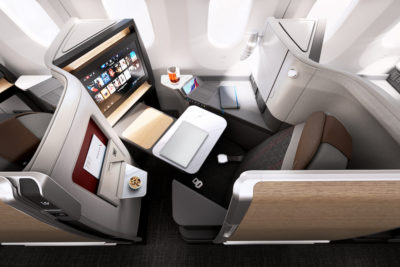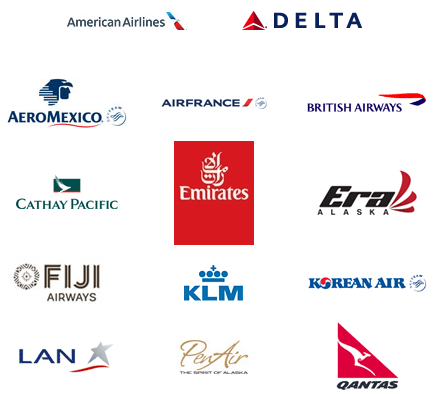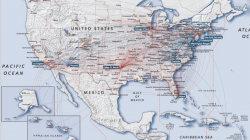Alaska Airlines, like much of the Pacific Northwest, sometimes seems to me like it lacks the attention it deserves in this country. But for the most part it works better that way. Surrounded by hundreds of miles of forest with only a few large cities, we do things without interference from the rest of you. A local insurance company even has creative ads celebrating Seattle stereotypes.
The biggest problem with Alaska is that they aren’t all that useful if you want to leave our protected enclave. There are lots of flights within the Pacific Northwest and to other states on the West Coast (including Alaska and Hawaii) — but not much beyond the Rockies. Connections are less common, making mileage runs impractical. On the other hand, they fly to just about every little airport in this region, and it’s also where American Airlines has its weakest presence, so many of their customers may find themselves on an Alaska Airlines codeshare.
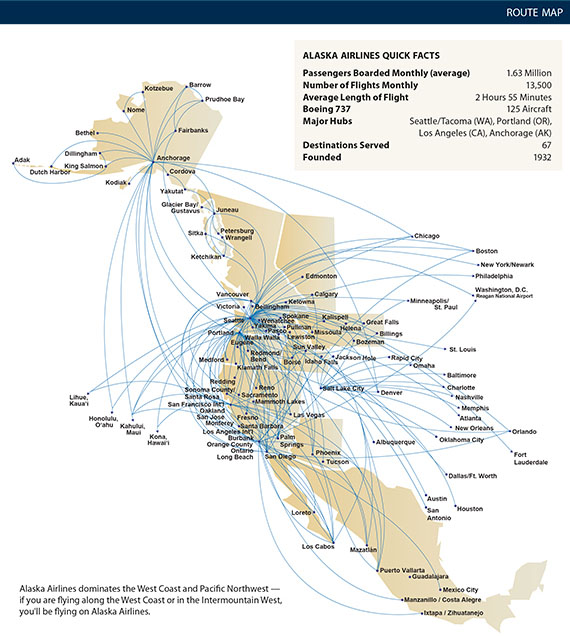
Perhaps in response to more direct and shorter flights, members can earn status with fewer flown miles. You can, for example, earn MVP status with only 20,000 miles instead of the 25,000 most carriers require, and MVP Gold status requires only 40,000 miles instead of 50,000. But these discounted qualification terms only apply if you fly solely on Alaska Airlines; those who credit partner flights must meet the usual standard.
Partnerships like the one with American are important because Alaska’s international network is almost non-existent. But again, Alaska turns this to its advantage. Like Southwest, it can focus on providing excellent service in the domestic market. It also partners with a very diverse group of other airlines. Instead of joining a regular alliance, it works with a mix of mostly SkyTeam and Oneworld carriers like American Airlines, Delta Air Lines, British Airways, and AirFrance. You can earn and redeem miles on all of them through Alaska’s Mileage Plan program.
Earn miles, yes, but there are few reciprocal status benefits. Only American and Delta offer recognition to Alaska Airlines’ elite members, and only Delta provides these members a shot at an upgrade (a very slim one, naturally, coming after Delta’s own customers).
To make up for the lack of such things as international upgrades and a large alliance, Alaska provides generous benefits to its elite members. MVP Gold members — who, remember, can qualify with only 40,000 miles — can cancel their tickets at any time before departure and receive a full credit for a future flight. This is a benefit no other major U.S. carrier provides with the exception of Southwest Airlines. Even ordinary customers will soon be able to cancel tickets 60 days in advance. (I’ve discussed before why most travelers –the vast number of infrequent ones — should consider Mileage Plan.)
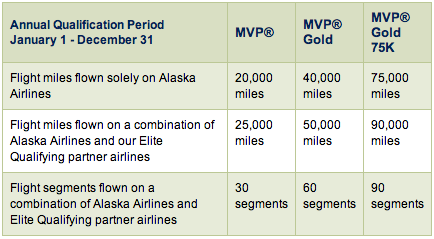
Service in first class is nothing too special, but I wouldn’t say it’s worse than any other domestic first class cabin. I actually like that there are no seat-back IFEs. The buzzing televisions on United drive me crazy and distract from my reading. Customers are given the option to use a portable digEplayer instead. The service is consistently friendly, which means more to me than any hard product. And the meals are a little different, too. My observation is that flight attendants often receive and cook the food in one large container before spooning it out onto individual plates. That means no baked-on cheese or sauce that detracts from the appearance, and the plates are neither too hot nor too cold. On that flight to Hawaii we got a special printed menu and meal choices.
If Alaska could do one thing, I’d appreciate some in-seat power. (Update: Today it announced plans to add this.) And it’s unfortunate that the bulkhead (Row 6) is the only row in economy class with extra legroom. At least there is no solid barrier at your feet.
Customers who fly 75,000 miles on Alaska only or 90,000 miles on Alaska and its partners can obtain MVP Gold 75K status, but the perks aren’t that much greater than MVP Gold. You’ll get an extra 50,000 bonus miles, the chance to nominate a family member to MVP, and four passes to their Board Room airport lounge. You can already get lounge access with the American Express Platinum Card, though I guess you could use the passes for a family member to save the $25 companion fee. And the MVP nomination will be of most use to someone who doesn’t fly with you very often and share in your benefits.
Suggested Goal: “Settle” for MVP Gold
My recommendation is that most people seek MVP Gold status. It’s more obtainable than most people think, and it offers a level of recognition similar to the top tiers at some other carriers once you strip away the benefits that don’t match up. Compare it to mid-tier status at other airlines (which might be a more fair comparison, since none of those offer international upgrades) and I think it blows them away in what’s promised and in the ability of Alaska to deliver.
If you are a fan of mileage running, be wary. I pointed out in the beginning that crediting flights from partner airlines raises the qualification requirement from 40,000 miles to 50,000 miles. I know that Alaska doesn’t have good mileage runs and its partners may offer better ones. But consider the cost of doing so. The first 10,000 miles you earn effectively count toward nothing if, instead, you think you had a chance to earn status by flying on Alaska alone. If you already knew you’d have to include some “regular” travel on parter airlines, then you’ve bitten the bullet and may as well do a mileage run or two.
I’ll end with a compliment: Alaska is one of the few airlines that has made meaningful enhancements to its loyalty program in the past year. Despite a few devaluations to their award chart, they have added benefits, improved the onboard product, and offered a number of decent sales and promotions. They’re also still expanding their route network out east, trying to play better offense in an increasingly competitive industry. Unlike some airlines, I would not be worried about what the future holds if I decided to switch my loyalty to Alaska.

